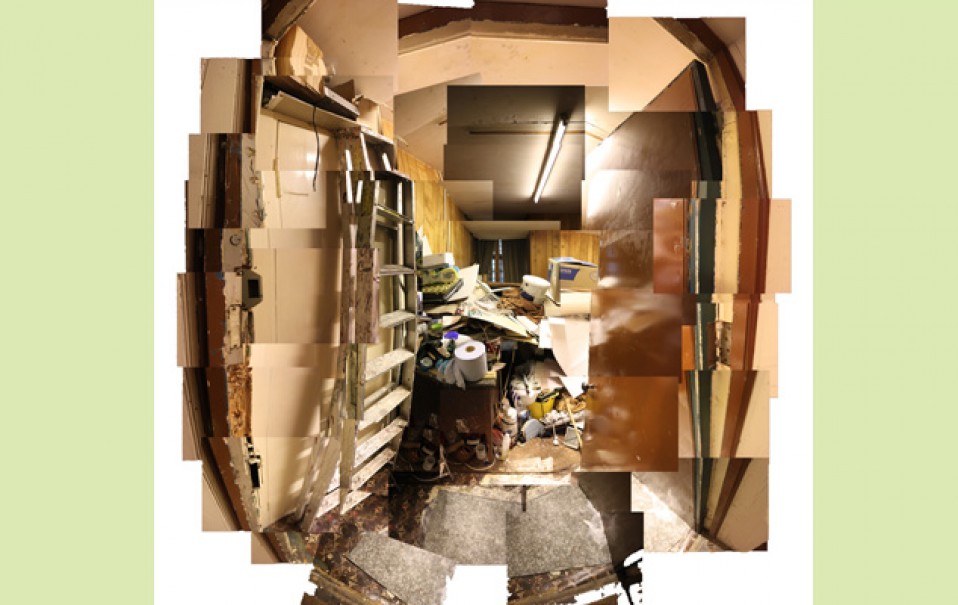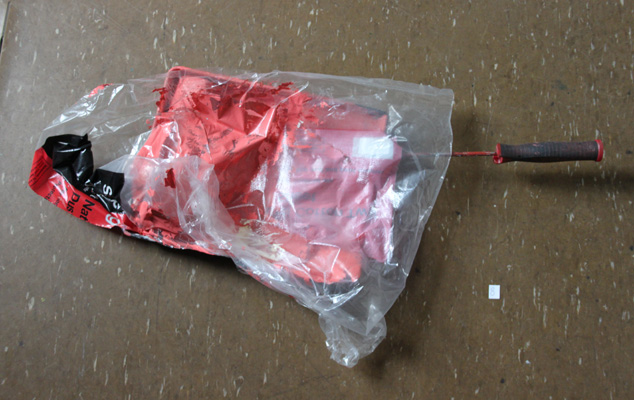
storeroom / showroom
Start of a 3/6 month residency of the PRIME collective
PRIME collective [Charlotte Bosanquet, Alissa Kleist, Tonya McMullan]
Ends 03 March 2012
PRIME collective (Charlotte Bosanquet, Alissa Kleist, Tonya McMullan) will undertake a residency in the store room of PS². For three/six months the back room will be archived and documented and will form the basis of a series of reactive works made by the artist collective. The storeroom will also act as PRIME’s studio and office space for a further three months, in which the group will make new works and negotiate aspects of collaboration. The first residency at PS2 will culminate in a show of curated works by PRIME.
Belfast based artists Charlotte Bosanquet, Alissa Kleist and Tonya McMullan initiated PRIME in January 2011. PRIME aims to provide a mutually supportive context in which to develop work, benefiting from networking and learning opportunities amongst the group and with other art professionals. The group meets on a monthly basis to further understand and analyse their own practices and that of others as well as actively seeking opportunities for the group to exhibit and curate works. The meetings also serve as a platform to discuss any research including films, literature, critical texts and visual art. The group actively encourages collaborations with other artists and organizations. These collaborations can take the form of guest artist / curators, seminars, talks and critiques.

start of project: store room
First store opening- Late Night Art: Thursday 01 September, 6-9pm
Inventory- Second store opening: Thursday 06 October 2011, 6-9pm
The Storeroom/Showroom project undertaken by Belfast-based artist collective PRIME (Charlotte Bosanquet, Alissa Kleist, Tonya McMullan) takes the form of an artistic excavation, whereby the three members of PRIME investigate the objects found in the storeroom adjacent to the gallery.
So far, the work undertaken by PRIME has consisted of a three-stage process that is done in sections over different days.The process consists of
Stage 1- Archiving
Stage 1 consists of carefully removing each individual object from the storeroom (this is done by methodically working from the front towards the back of the room). Using a computer, the object is allocated a number, and a detailed description of the object is given, with information about its size, colour, shape etc., describing any interesting or noticeable features. The object is then brought upstairs to be photographed.
Stage 2- Photographing
During Stage 2, each object is set-up in a well-lit area with its pre-allocated number clearly displayed next to it (this is done using cardboard number plates). The object is then photographed, and care is taken that the object is displayed similarly to how it was found in the storeroom. The object is then placed in a queue where it will be collected to be stored .
Stage 3- Storing
The object is given a stick-on label with its pre-allocated number marked on it. It is then brought to a secondary storage space elsewhere in the building. Here it is placed on a shelf, together with other similar or related items from the storeroom. The object’s number is then added to a ground plan its outline is sketched on a second plan showing a frontal perspective of the secondary storage space. There is an area in the secondary storage space allocated for objects that are thought to be rubbish, broken or of no apparent value.
Using this three-stage process PRIME will create a detailed written and visual inventory of what was in the storeroom, what it looked like and where it was re-positioned for possible future use. Once the entire storeroom has been emptied entirely a more detailed history of a number of objects will be investigated.

Object 08
Object 08: ‘Paint roller tray with peachy coloured paint hardened onto it, 2 rollers one large and one small are hardened into the paint, a piece of plastic bag is stuck to the top of the roller tray and roller paint is completely solid, it looks like it has all been there for quite some time. A darker colour of paint partially covers the handle of the roller.’

